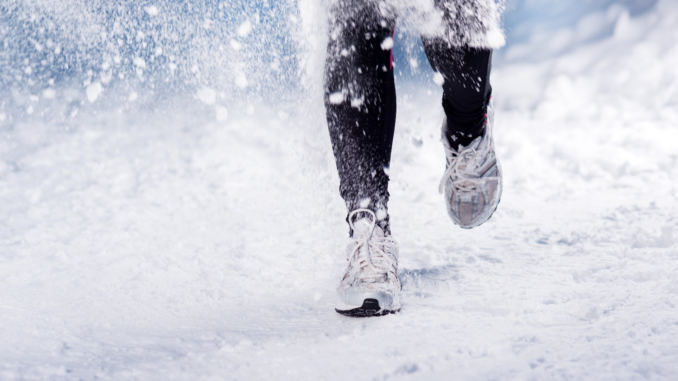
Nothing beats the great outdoors, but Mother Nature does not always cooperate with your running schedule. To be safe with outdoor fitness, the key is making the right plan. While cold-weather training can be safer than training in the heat of the summer, making sure that you are prepared is the best practice to keep you moving through the colder winter months.
Dress the part.
Layering of clothing is the best way to approach any winter workout. Being able to lose some layers, or add on if need be allows you to manage the temperature changes that come with exercise. Make sure, however, that you are not layering with articles of clothing that you cannot hold onto or tie around your waist as they are removed. No one wants to be carrying around a bulky item while trying to run in any weather.
Inner layer: A moisture-wicking material that will not absorb moisture like cotton does and will keep you drier and warmer. Ideal fabrics include polyester, spandex or Lycra.
Middle layer: An insulating layer that will trap your body heat and keep you warm. Ideal fabrics retain heat longer and include merino wool, synthetic fleeces, or goose down.
Outermost layer: This layer protects you from the elements and needs to be waterproof and wind resistant.
Socks: Wool socks are both sweat wicking and insulating.
Gloves: A good pair of running gloves will keep your hands warm.
Headgear: Your head is one of the areas most prone to heat loss, so always have something to insulate your head that can fit in your pocket if you get too warm later in the run.
Get moving before you get moving.
With any training session, movement preparation through a dynamic warm-up is always important. A common mistake people make is heading out the door without a proper warmup. Actively elongating the muscles, waking up the nervous system and increasing core temperature before heading out to run will decrease the risk of injury and allows for managing core temperature better. Once core temperature starts to rise, you may also discover that you have overdressed for the session. Too much sweat and extra moisture can be dangerous if you are on a long run and cannot get somewhere to warm up. When first starting your winter running training, opt for a short, 10-minute run around the block to warm up and to see how comfortable you are once you really start giving off heat. This will allow you to adjust to the temperature and the ability to drop off any unwanted layers at home or pick up more before you head out on your longer main run. Once you’ve been training for a while you will have better insight into exactly what layers you are going to need at any temperature.
Lastly, do not forget to hydrate! Even if you are not feeling super sweaty like you would in the summer, you do still sweat and you will still become dehydrated. So make sure to rehydrate once you are finished your session. For longer sessions, hydrate with 4-5 gulps of water after every 20 minutes of exercise.
Janice Keown, BSc. Kin. CSEP-CPT, ACSM-EP, Fitness & Sports Instructor CFB Kingston
